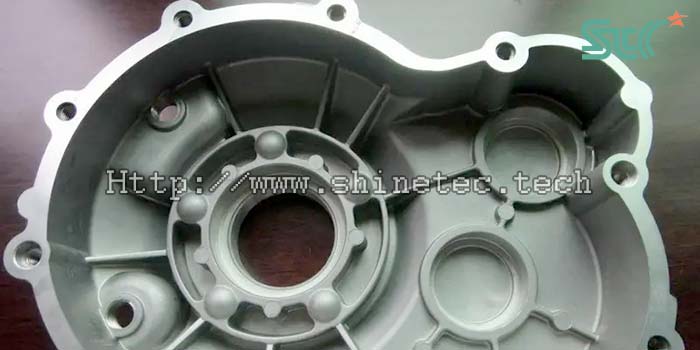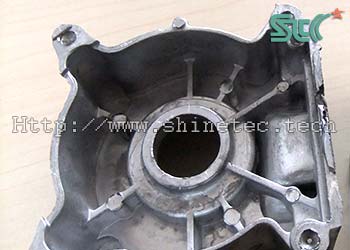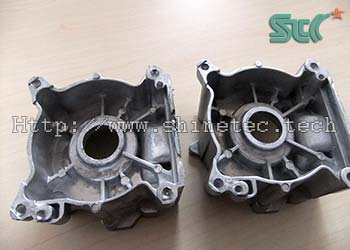Automobile gearbox parts, synchronizer gear hub deburring, descaling and polishing process method
How to deburr, descale and polish the synchronizer gear hub,parts of automobile gearbox?
As a key component of automobiles, the transmissions have particularly strict requirements on the material, shape and position tolerance, surface quality and other factors of the mechanical parts assembled into them. The synchronizer hub is an indispensable and important component of the transmission, which is mainly used to reduce the impact between gears when the car shifts gears and achieve smooth speed change of the car.
Synchronizer gear hubs are generally produced by powder metallurgy. During the processing and forming process, due to reasons such as molds, processes or raw materials, visible burrs and rusts often appear on the edges between the teeth or in the middle keyway of the product. The presence of this burr phenomenon will have an adverse effect on the surface quality of the product, and will have a great impact on the mechanical properties, safety, and user experience of the transmission assembly. Today we will share a case study on how to remove burrs and flash from automotive synchronizer gear hub products and achieve high-efficiency finishing and polishing in large quantities. This deburring process method is also suitable for the finishing and polishing needs of other automotive parts such as gears, gear rings, gear sleeves, powder metallurgy or castings.
- jerrylu
- 2024-12-10
- 0 Comments
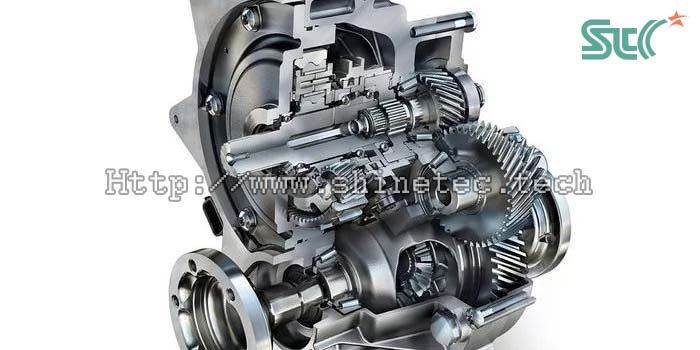
1. Synchronizer gear hub before deburring, finishing and polishing

Materials:
Powder Metallurgy
Appearance:
There are obvious burrs, flashes, and rough edges.
Shape:
Circular
Size:
20*90 MM
Pre-polishing process:
Sintering
Post-polishing process:
Anti-rust treatment
2. Finishing and polishing requirements
- Efficient batch deburring, deflashing.
- Improve surface brightness.
3. Synchronizer gear hub deburring,finishing and polishing process details:
| Process steps | (1) Heavy cutting to deburr and descale | (2) Fine finishing to improve surface brightness | (3) Drying and rust prevention |
|---|---|---|---|
| Machinery and Equipment | vibratory finisher | vibratory finishing machine | vibratory dryer |
| Speed | High | High | High |
| Abrasives | heavy cutting media | fine finishing media | drying media |
| Ratio of media to workpiece | 4:1 | 4:1 | 8:1 |
| Chemical compound | finishing compound | polishing compound | N/A |
| Water | Right amount, the liquid level does not exceed the media | Right amount, the liquid level does not exceed the media | N/A |
| Processing time | 30 minutes | 30 minutes | 10 minutes |
| Remark | Automatic screening and rinsing | Automatic screening and rinsing | Hot drying |
4. Synchronizer gear hub after deburring, finishing and polishing

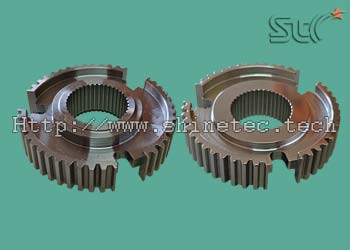
5. Additional Comments
- The main production process of synchronizer gear hub is powder metallurgy. After sintering, it needs to be trimmed to improve the dimensional accuracy of the sintered product and ensure that the product accuracy meets the requirements of synchronizer gear hub. The burrs are mainly concentrated on the edges of the tooth edges and keyways, and the daily processing quantity is large. Therefore, a vibratory finishing machine is used, and a heavy-cutting finishing media is used to remove the burrs. The sharp angle of the media can penetrate into the grooves between the tooth edges to achieve the purpose of removing burrs and chamfering.
- Fine finishing and polishing brightness is also achieved by using a vibratory finishing machine, using high-density precision polishing media with slight cutting force, which can improve the surface brightness while micro-cutting and reducing roughness.
- In order to improve the anti-rust and anti-corrosion performance of the product after water treatment, it is immersed in a rust inhibitor for anti-rust treatment after polishing. Finally, a vibratory dryer is used to absorb the surface water and dry it.
6. Final summary
-
In this case study, we demonstrate the process of surface chamfering, deburring and polishing of a powder metallurgy synchronizer hub component.
This process is also suitable for surface polishing of powder metallurgy sprockets, bushings, structural parts, 3D printing products and metal powder injection molding products. -
If you need professional technical support for deburring, descaling, derusting and polishing of aluminum alloy and zinc alloy parts or the following products through casting, die-casting and other molding processes, you can refer to the above cases:
Gear hub processing technology
Gear ring deburring equipment
Gear deburring technology
Gear deburring machine
What are the deburring processes after rough machining of gears
Gear deburring and chamfering technology
Gear hobbing deburring




